
Yokogawa, The Time / The History of Yokogawa
~ The mystery of it’s individuality ~
横川の歴史 日本語バージョン 横川の歴史 ~その個性の謎~
- A river called "Yokogawa", has decided the destiny of the city.
- The independent spirit, which also supports each other, has been born & growing, by facing the difficulties
- People and supplies have gathered. Various businesses have started
- Free and open minded enterprising and founding. "The Town of Misasa"
- “Ohta River floodway construction” that changed the city. And, then ”now”
- The first shopping street, under the railroad bridge,in Hiroshima
- Six old and new shopping streets got united
- The role of “Misasa District Council of Social Welfare”, and the five shopping streets, in “Yokokawa district”
- "The Yokogawa Mysterious Market Event" born from the regional cooperation
- The history of “streetcars in Hiroshima”
- The place that serves people & the area, as a transportation hub, connecting the Sannin Area and the Sanyo Area
A river called "Yokogawa", has decided the destiny of the city.
The history of “Yokogawa – "Yoko"=Side or Horizontal & "gawa(kawa)"=River” began to change drastically when the construction of “The Hiroshima Castle” satrted, in 1591. The location of the castle was chosen to be in the largest island in “Ohta River” delta area. The areas consisted of multiple large and small islands. The island, called "Beppu-no-sho" which was located, in the northwest, was the origin of “Yokogawa”. “The Ohta River” has been splitting, vertically (from north to south direction), in the delta. The only one part that branches from “Honkawa river” to “Tenma River” flows horizontally (from east to west direction). This reasoned the name of "Yokogawa".
“Beppu-no-sho” was destined to get separated from the castle town by this “Yokogawa”.
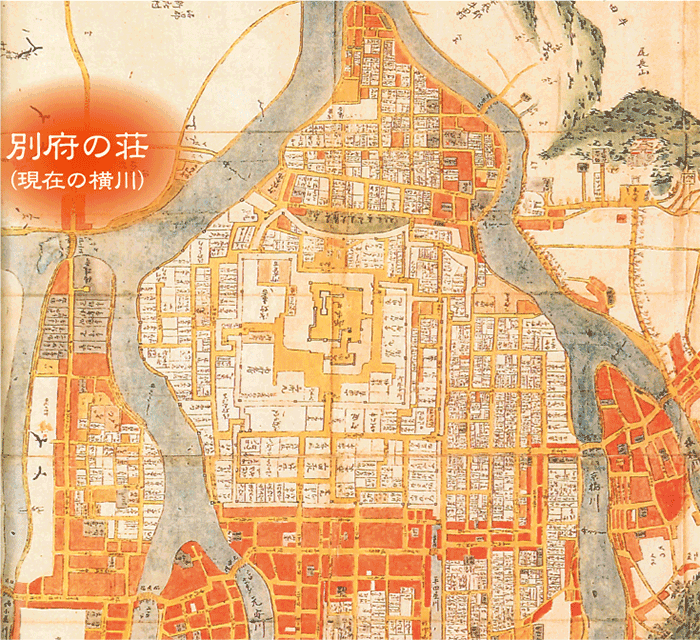
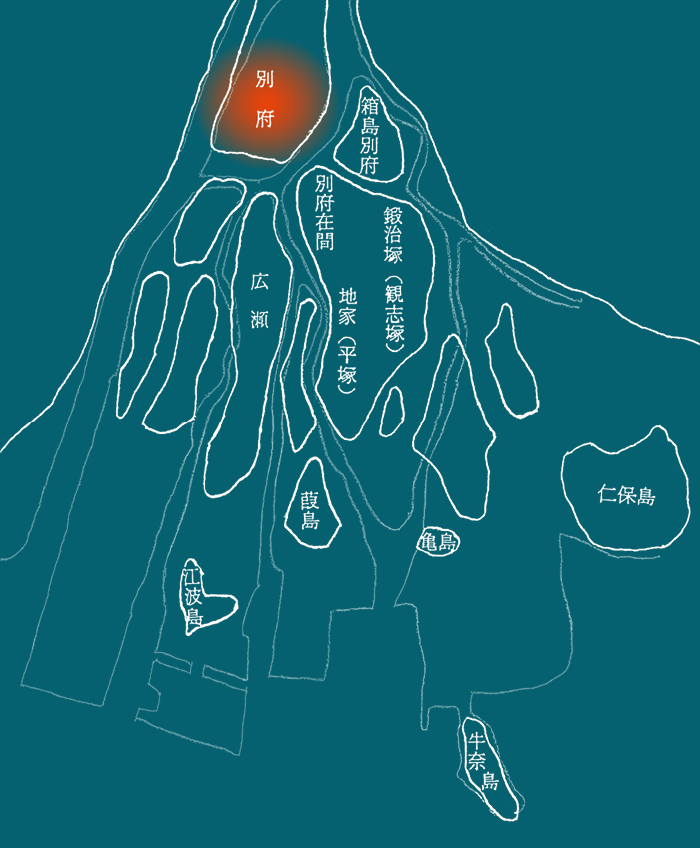
太田川改修30年史より
The independent spirit, which also supports each other, has been born & growing, by facing the difficulties
The first destiny was that ”Beppu-no-shou” held the role of a retarding basin to protect the castle town from flood damages.
According to the construction contract of “Hiroshima Castle”, “Honkawa river” embankment of “Beppu-no-sho” shall get low, and, the embankment of the castle town will get higher than the embankment of “Beppu-no-sho”. The embankment on the upstream side of the castle town will get lowered and flooded. This idea shall reduce the amount of water downstream." And, it was built, accordlingly. Every time, “Ohta River” overflowed, “Beppu's villa” was flooded. People also started to call this place, "Saikachigahara".
As of today, on the right bank of “The Honkawa river”, we may see the traces of "over the water" that cut down the embankment. The town name, "Uchikoshi-cho" is thought to include the meaning that the flooded water "passes" from "inside" to outside (former “Fukushima River”, former “Yamate River”).
“Yokogawa” has suffered from flood damages until recent years. “Geibi News Paper” on July 5, 1919, stated that "Missasa Shinjo Bridge”, “Yokogawa Bridge”, and “The train bridge” have gone. The houses were covered by flood to their underfloors. “Yokogawa Station” was covered by flood to it's top ceiling. “Yokogawa” was isolated. No assistance valid. There is no way to supoort “Yokogawa”.
The history of accepting flood damages and achieving restoration and reconstruction, in cooperation with all of local residents together, in order to protect the castle town “Hiroshima”, has bore the community spirit of “The independent spirit, which also supports each other”.
As a fact that validated “the independent spirit, which supports each other”, when "The rice riots" that occurred in “Toyama Prefecture”, in 1918 and spread nationwide immidiately, there was “Misasa-cho's method” (the area including the present “Yokogawa”). At that moment, “Misasa-cho”, as the town, controlled rice grains by themselves. It was a remarkable fact that the town, “Misasa-cho”, prevented “The rice riots”, with a unique method, such as, town’s management to the rice supply, and strong cohesion of the community.
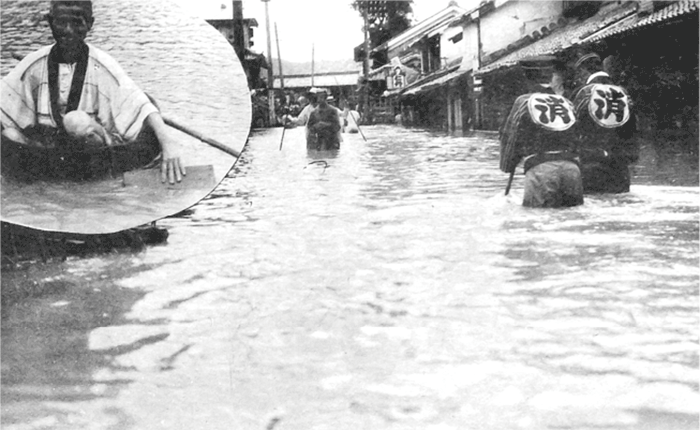
1919年(大正8年)の水害
広島市公文書館提供
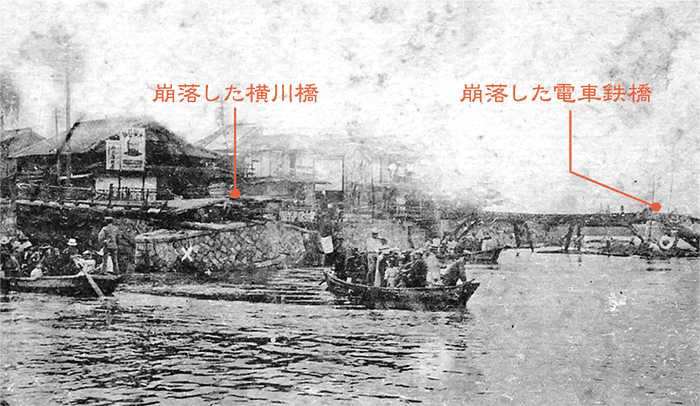
広島市公文書館提供
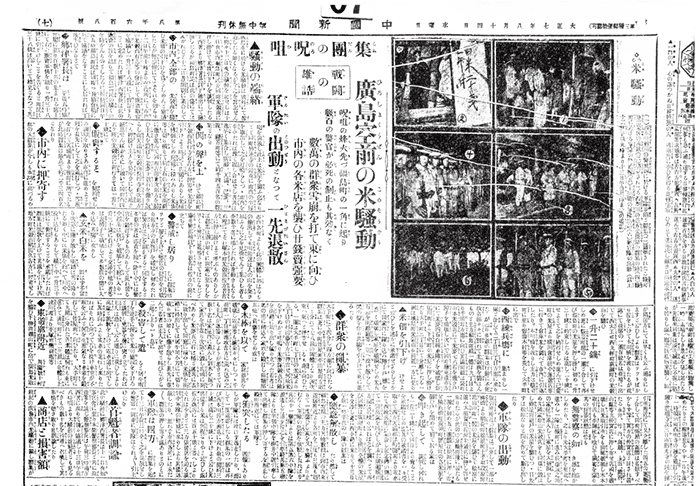
1918年(大正7年)
People and supplies have gathered. Various businesses have started
The second destiny was that it obtained an attractive condition which was being "the gateway to the castle town". Because it was located out of the castle town.
“Beppu-no-so” owned the northern agricultural mountainous villages that could produce rice, vegetables, wood, and iron, behind it.
In front of “Yokogawa”,there was the castle town,”Hiroshima”,separated by a river, called “Yokogawa”.
As the castle town expanded and developed, agricultural and forestry special products and various supplies were brought, in from the upper reaches of “The Ohta River” behind. Therefore, miscellaneous commercial businesses occurred spontaneously, and the number of houses increased.
Eventually, the grassy names of "Beppu-no-sho" and "Saikachigahara" were getting forgotten, and the regional name "Yokogawa" was established as the nickname of the river.
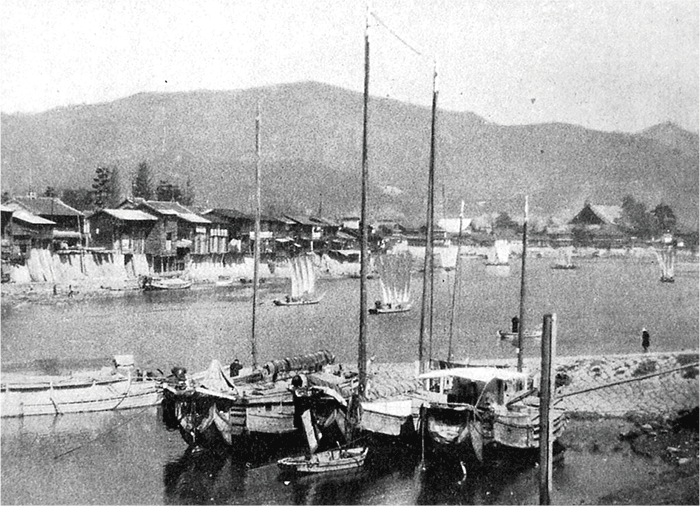
「市政施工120周年 ふるさと広島市」より
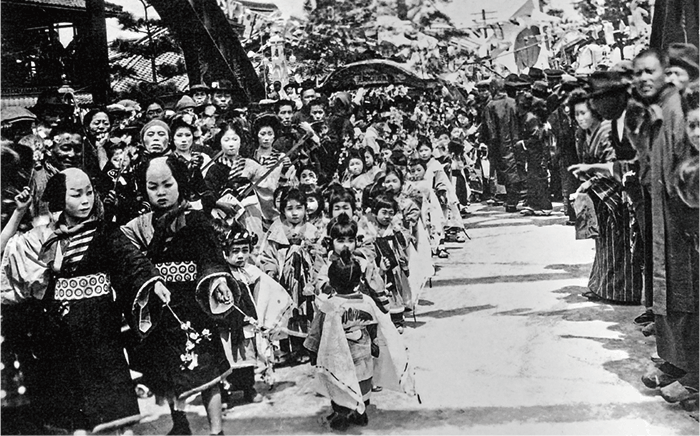
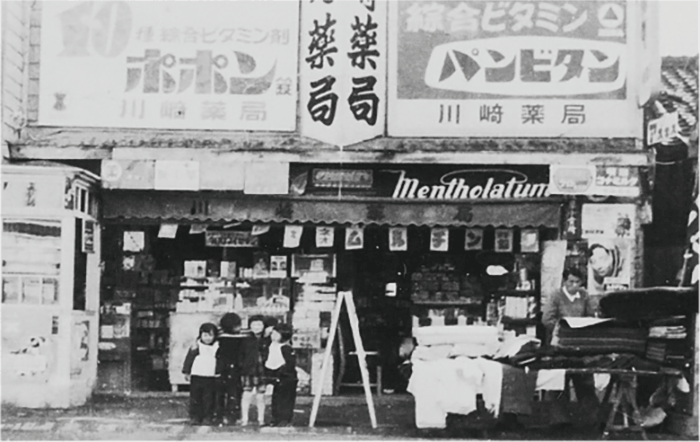
1951年(昭和26年) 川崎薬局提供
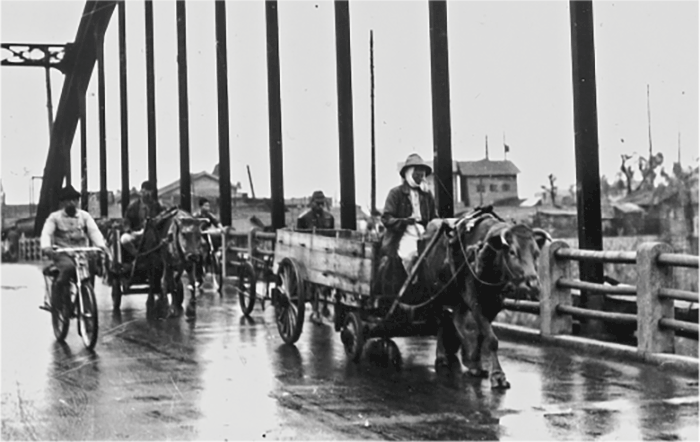
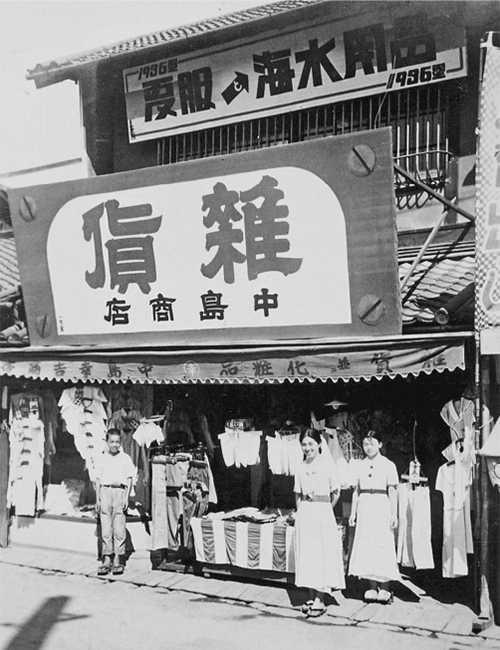
Free and open minded enterprising and founding. "The Town of Misasa"
Before being incorporated into Hiroshima City in 1929, “Misasa-cho”, “Asa-gun” (currently Yokogawa-cho, Misasa-cho, Kusunoki-cho, Nakahiro-cho, etc.) had been developing the spirit, which was "do not refuse whoever" and "do whatever necessary". The pioneering sprit has been developing new products and advanced manufacturing methods.
In manufacturing(mono-zukuri), the needle-manufacturing industry, used iron sands from “Chuugoku mountains” and utilized the boat transportation on “Ohta River”, became the number one, in the Asia, in “Taisho era”.

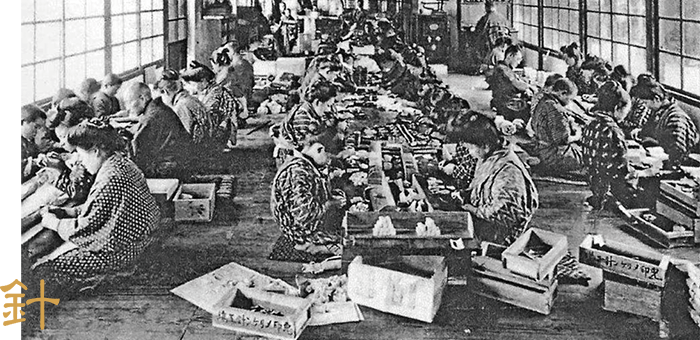
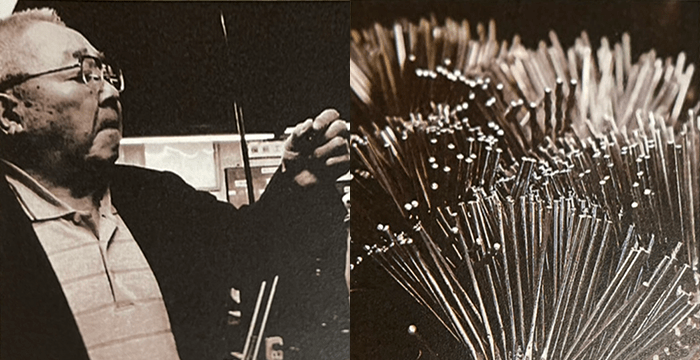
In addition, a wide variety of industries, such as wood, indigo, seedlings, vinegar, castings, glass, and rubber (balls), have gathered together, and have produced “an only one-of-a-kind” companies that have made names for themselves, in Japan and also overseas, have grown, because of their unique strengths.
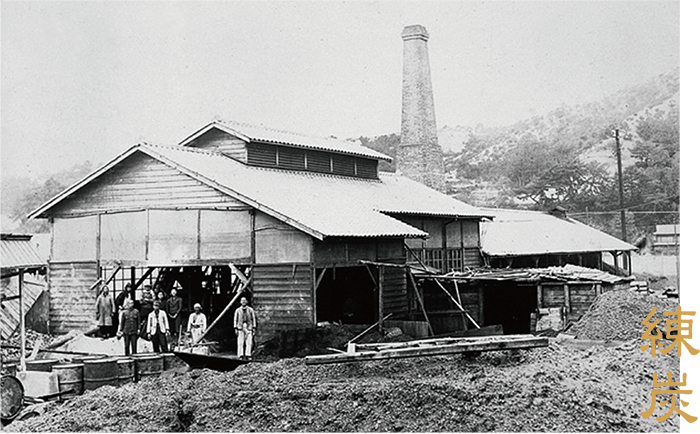
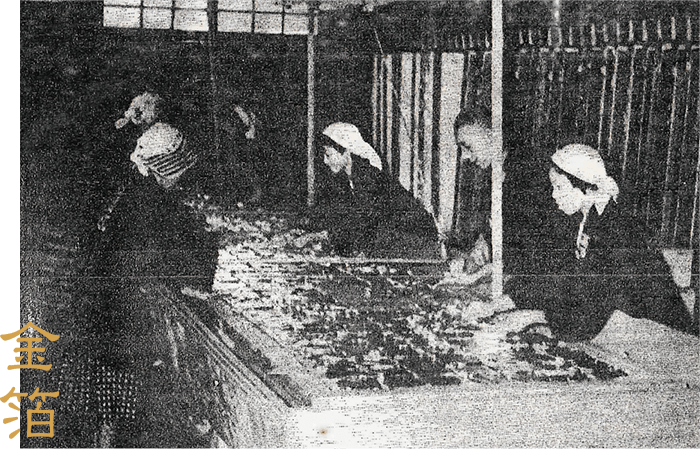
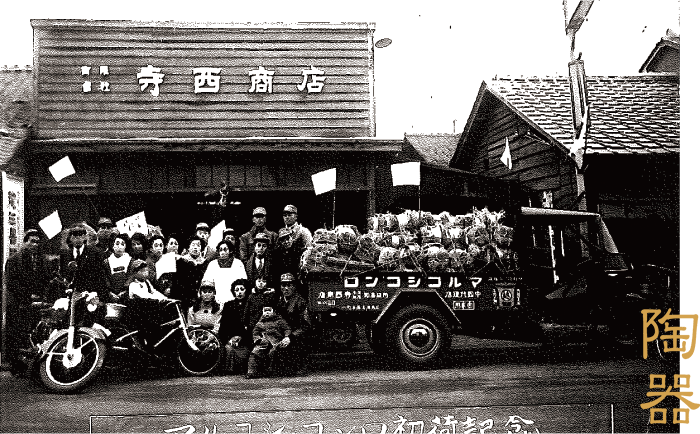
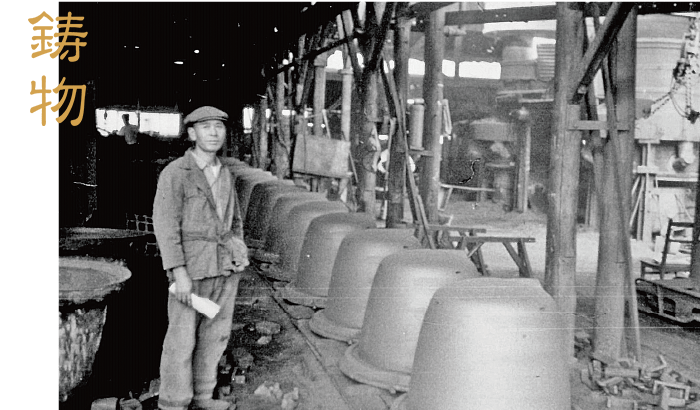
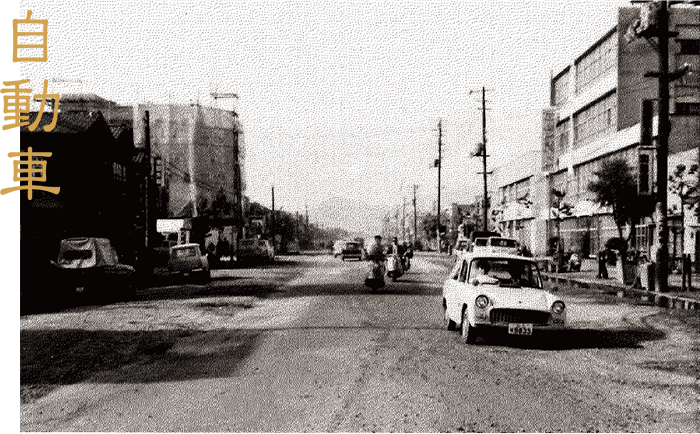
1962年~1963年頃(昭和37年~昭和38年頃)
広島トヨペット提供
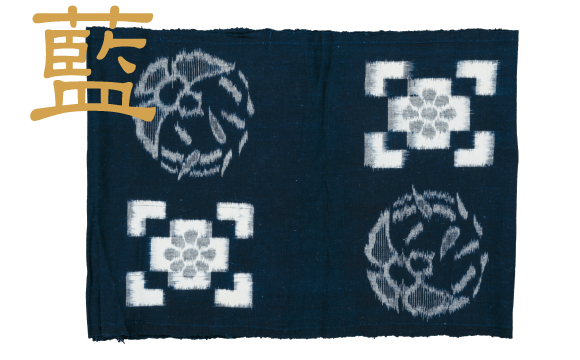
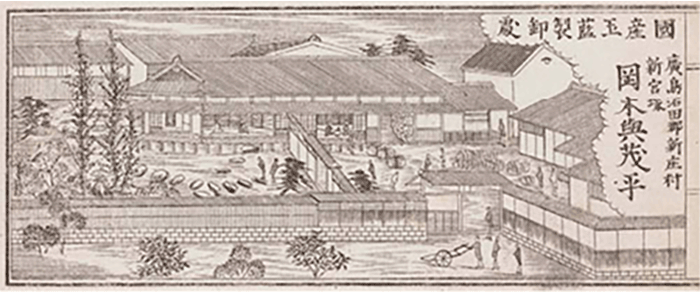
郷土資料館提供
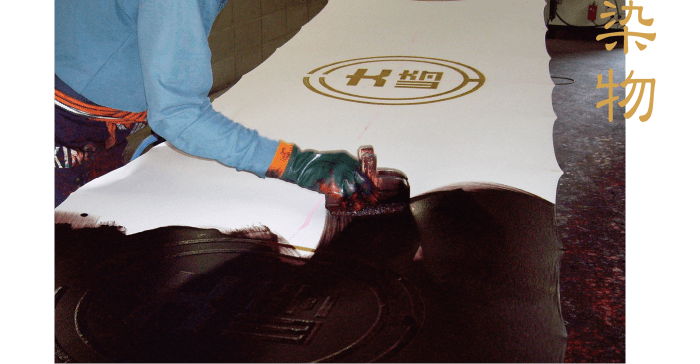
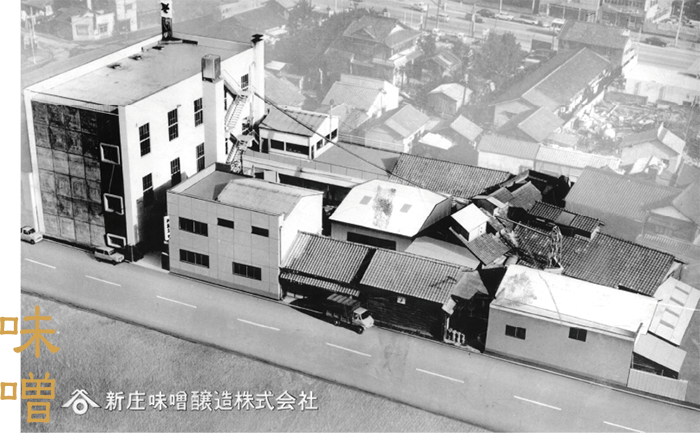
新庄みそ提供
"Mikasa" and "Molten", which manufacture balls for games of volleyball, soccer, basketball, etc., are well-known as the official ball brands for international competitions. "Otafuku Sauce", which is indispensable for Hiroshima's soul food, ”Okonomiyaki”, and the Hiroshima's first supermarket, "Housewives’ Shop" (currently "Fresta"), were founded in the former "Misasa-cho".
“Futaba Tosho”, which once turned to dusts, by the atomic bomb, quickly visited the burnt field of “Tokyo Kanda” to buy magazines. .. And, "Futaba Tosho" sold these, in the black market, in front of Yokogawa station. This was a story that this activity could cheer the local residents up.
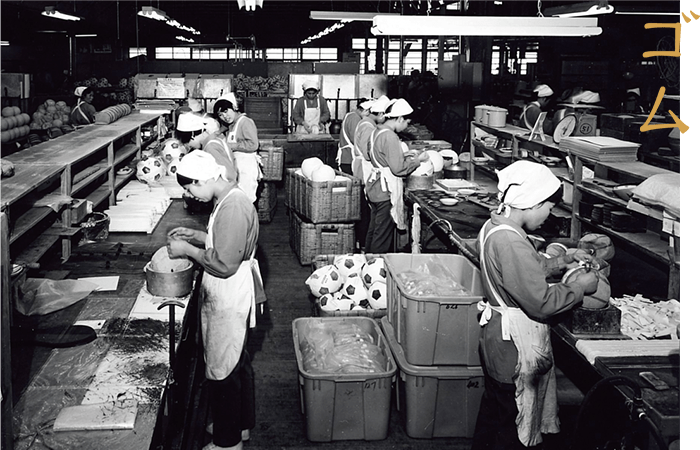
「革貼り作業風景」 ミカサ提供
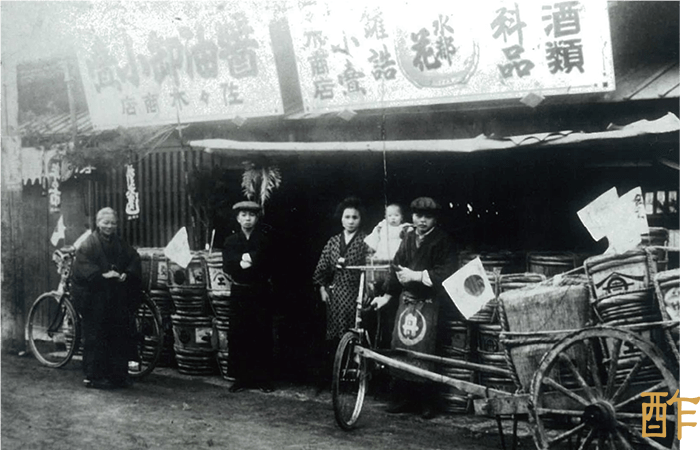
1922年(大正11年) オタフクソース提供
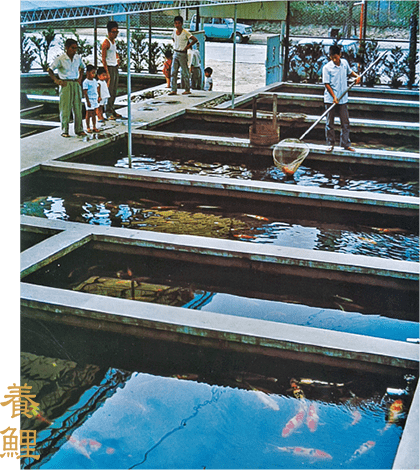
小西養鯉場提供
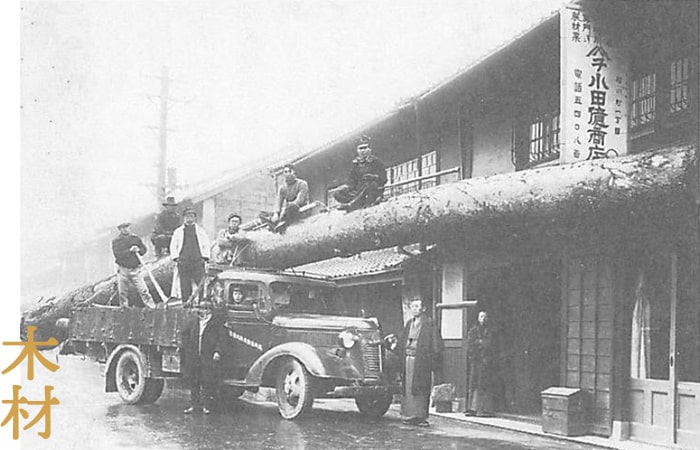
トラックで松の大木を運び込んだ様子 小田億提供
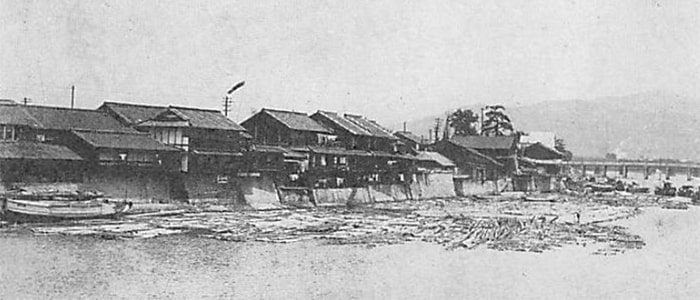
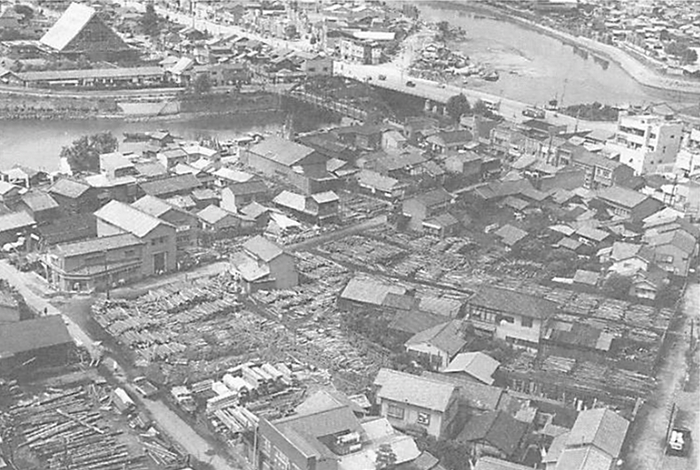
“Misasa Credit Union”,the predecessor of the current "Hiroshima Credit Union", was born in this area where these entrepreneurs gathered. The amount of it's funds in 1943, was, overwhelmingly, the biggest, among the 292 urban credit unions nationwide.
“The former Misasa-cho, Asa-gun” is now “Misasa-cho”. “Misasa-cho” still owns a free-spirited atmosphere, since “the Hiroshima castle” was built.
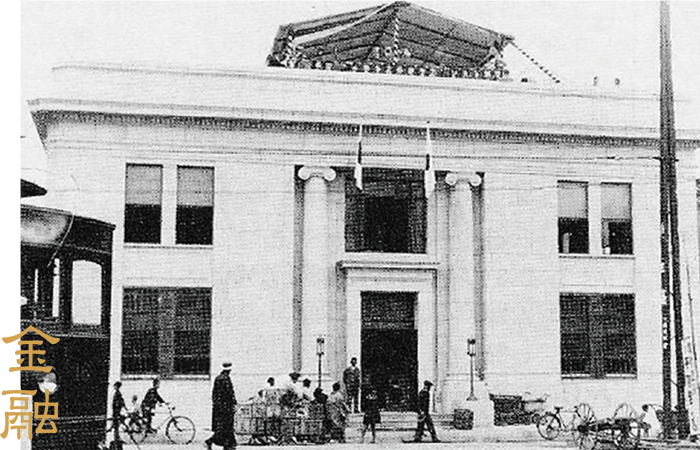
広島信用金庫提供
“Ohta River floodway construction” that changed the city. And, then ”now”
For “Yokogawa area”, which has taken the risk of flooding, in order to protect the castle town, the hydraulic control work on "Ota River" has been a long time , historical, strong cherished wish. It was in 1967 that "Housuiro - spillway" that circumvented the main stream of “Ota River" to the western end of the delta got completed. It is the historic year when “Yokogawa area” was released from the repeated floods, since the castle was built.
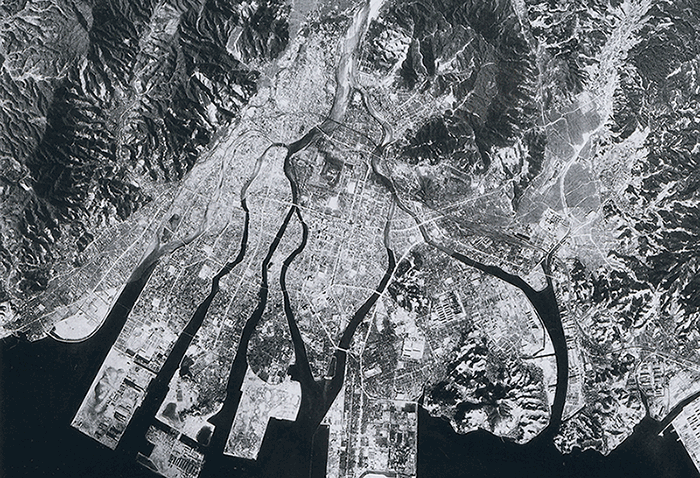
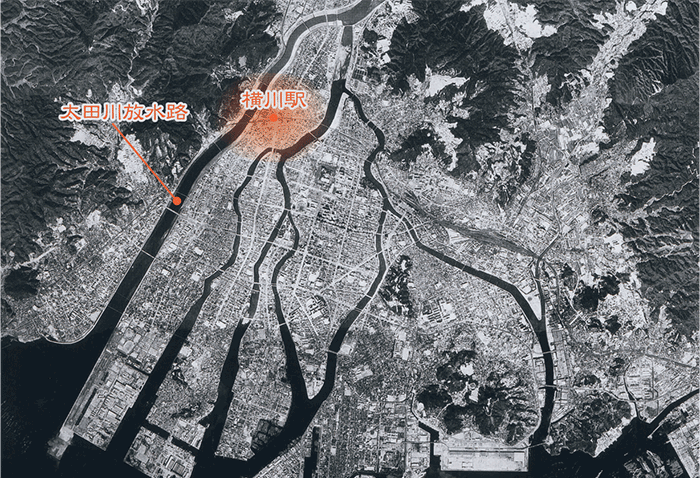
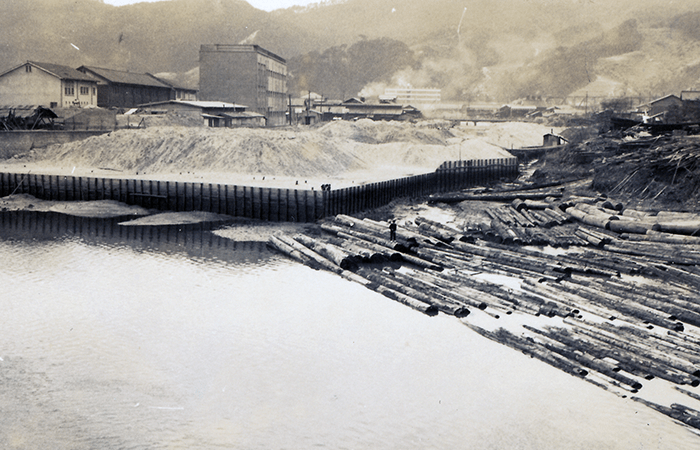
現在の天満川(中広中学校付近)の様子
広島市市民局文化スポーツ部文化振興課提供
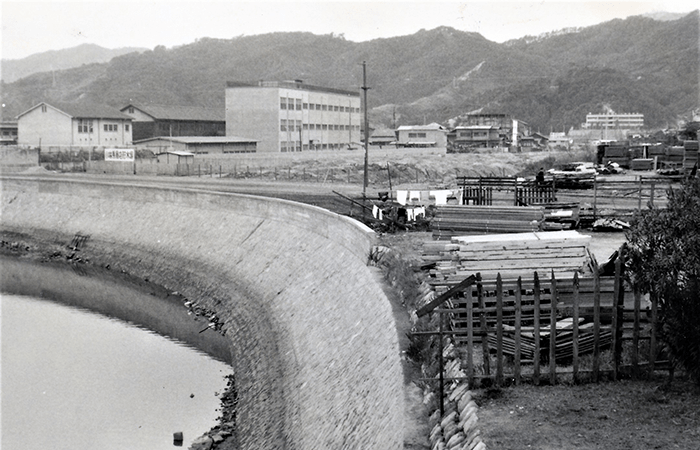
現在の天満川(中広中学校付近)の様子
広島市市民局文化スポーツ部文化振興課提供
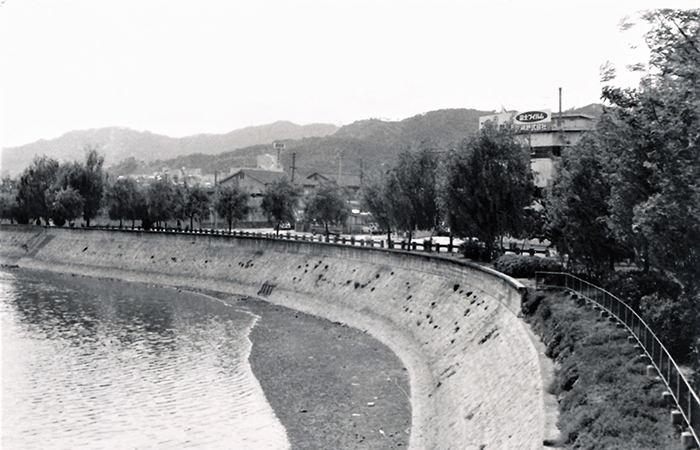
現在の天満川(中広中学校付近)の様子
広島市市民局文化スポーツ部文化振興課提供
In order to build a high embankment on the floodpass, it was necessary to raise the intersecting "Sanyo Main Line" and "Kabe Line". The original plan was the "filling method", but the residents of Yokogawa, who had concerned of the division of the city and the eviction of shops, would stand up.
Residents' persistent and steady movements demanding an "elevated type" have been successful, and the center of the city (around "Yokogawa Station") has been changed to an elevated type. And 2 stations, "Sanyo Main Line Station" and "Kabe Line Station", which had been separated until then, were combined as one "Yokogawa Station".
The first shopping street, under the railroad bridge,in Hiroshima
At the request of “Misasa District Council of Social Welfare” and local residents, the first "municipal houses with stores" and "Yokogawa Shopping District Promotion Association Building" were built in the vacant previous railway space, as the result of the elevated construction.
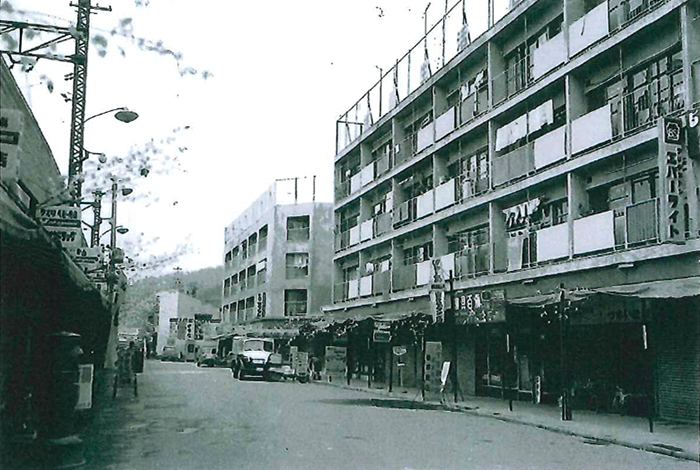
1964年(昭和39年) 中国新聞提供
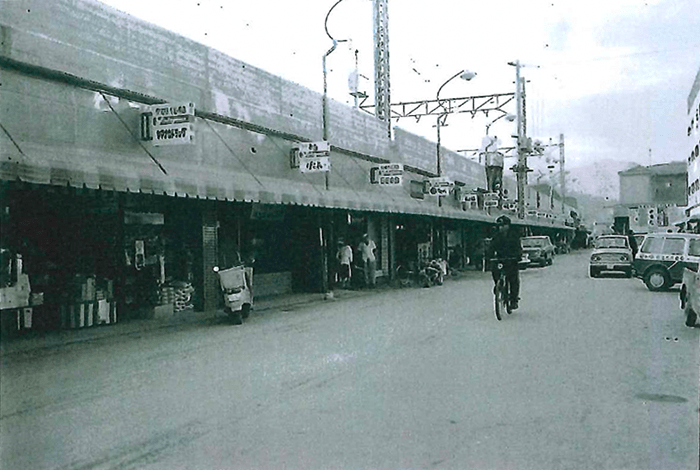
1964年(昭和39年) 中国新聞提供
Six old and new shopping streets got united
There used to be six shopping streets in Yokogawa.
Five shopping streets, "The Station Front Shopping Street", "The Yokogawa Hondori Shopping Street", "The Prosperity Party", "The Cross Road Shopping Street", and "The Hoshi no Michi Shopping Street", in a retro alley, have re-built, after "the world war 2".
After that, the sixth "The Shinjuku Shopping Street" was born, which was reorganized on the occasion of the elevated railway.
The six shopping streets had continued to work together, working as a team. In 2021, "The Prosperity Association" joined "The Yokogawa Hondori Shopping Street". Currently, five shopping streets are active.
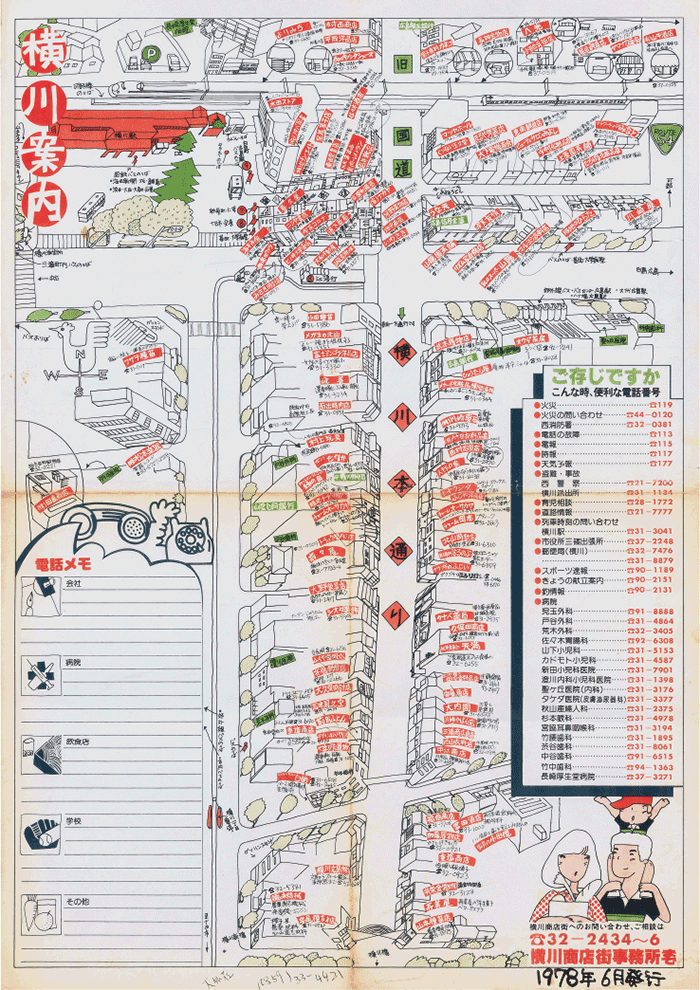
The role of “Misasa District Council of Social Welfare”, and the five shopping streets, in “Yokokawa district”
"Misasa District Council of Social Welfare" works closely with 16 neighborhood associations, such as, "The Tondo Festival", "The School District Townspeople Friendship Athletic Meeting" , "Yokogawa Fushigi Market, Event" and "Kayoko Bus Anniversary Event", and local groups, and the local residents get united.
We are striving to create the town.
"The union office" is located in two elongated buildings, along "Sanyo Main Line" owned by "Yokogawa Shopping District Promotion Association", which was established in 1964.
The movie theater, "Yokogawa Cinema" known for its unique management, "Hiroshima Yokogawa Sports Culture Club" that supports the women's soccer team, "Ange Violet Hiroshima", and The Atelier "Yokogawa Soh-Soh", where young talented artists gather, are also located in in, and these are active.
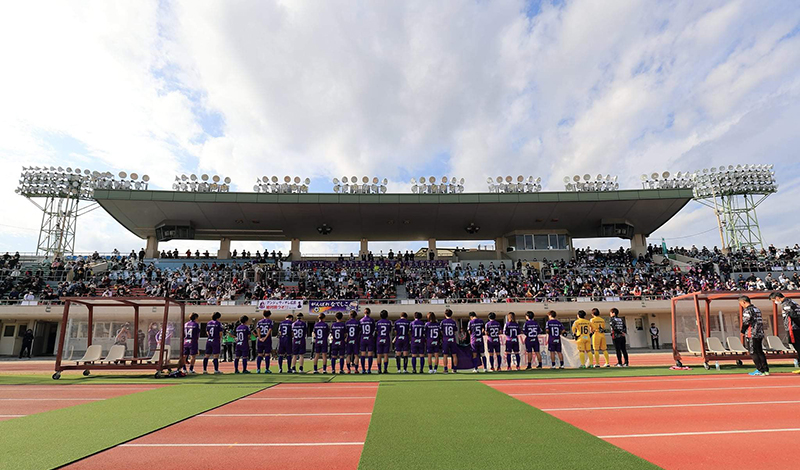
"The Misasa District Council of Social Welfare" and the five shopping streets of Yokogawa are working together to revitalize the region.
The "Yokogawa, Kampai-Cheers, Kingdom", which controls the planning and execution of various events, and "The Yokogawa Area Management Liaison Council," which consisits of local residents and companies, are working on "The Yokogawa Original - town development".
“The independent spirit, which also supports each other”, the spirit of "do not refuse whoever comes", and the challenging spirit, to overcome the inconveniences that are to protect the castle town, as the gateway to the castle town, are still alive, in our hearts.
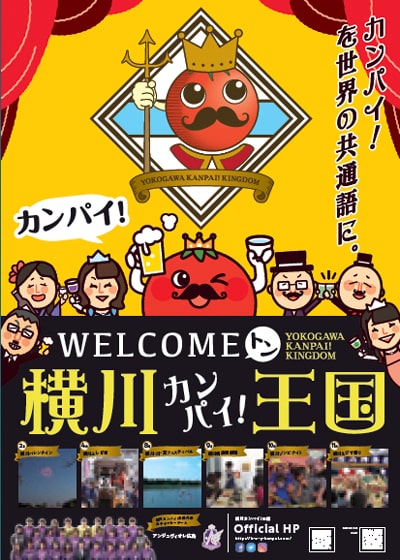
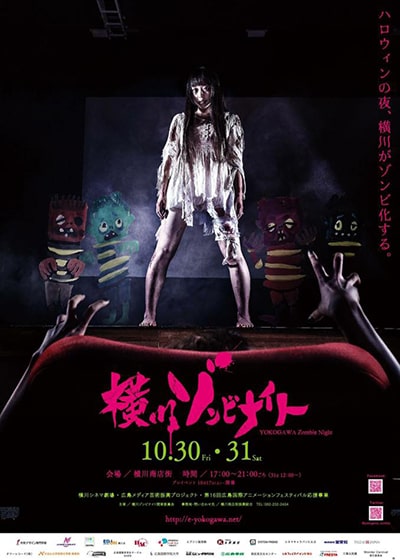
"The Yokogawa Mysterious Market Event" born from the regional cooperation
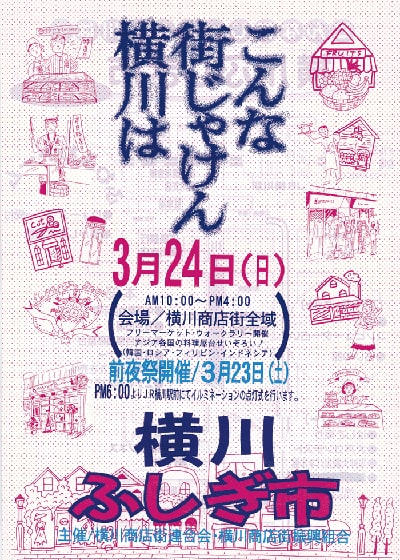
"Astramline", which got open, in 1994, drastically reduced the number of passengers of fixed-route buses that go through Yokogawa, to two-thirds (2/3).
In 1996, Yokogawa's largest event, "Yokogawa Mysterious Market Event" was created/started.
Aiming "creating something new, something exciting" in the areas and shopping districts, people & the shopping streets in Yokogawa, who had worried of the decline of this area, created/developed this "Yokogawa Mysterious Market Event" .
The history of “streetcars in Hiroshima”
In the City, Hiroshima, there are lots of (1) Buses, (2) Branches, and (3) Bridges. Route buses are so active that people say Hiroshima is the city of 3Bs. Along with “The Atomic Bomb Dome”, the symbol of the city of Hiroshima is the tram, whose nickname is "Hiroden".
In other cities, usually, the public organizations started "buses and trams". However, in Hiroshima, the private company started "buses and trams", and it has continued to today.
"Hiroden, Hiroshima Electric Railway Co., Ltd." (currently "Hiroshima Electric Railway Co., Ltd.") opened in 1912. It has developed as a citizen's foots, since it started the operation between "Hiroshima Station-Aioi Bridge", "Kamiya-cho-Miyuki Bridge", and "Hatchobori-Hakushima".
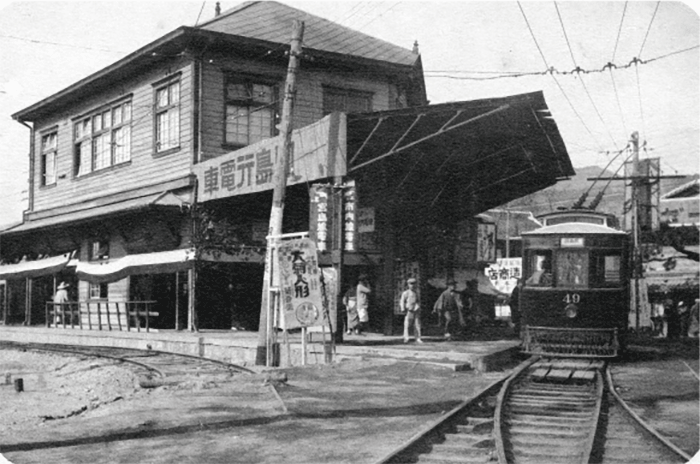
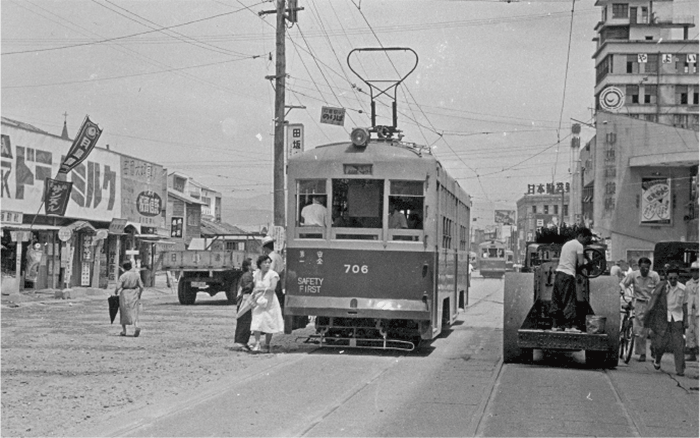
[Yokogawa Line]
"Yokogawa Line", which opened, in 1917, was a single track that used a lot of the dedicated train lands that were aquired. Because there were no wide roads. The end point, "Misasa Tram Stop", was located near "The old Unseki-Kaido". This made transferring people to "Misasa Station", the starting point of "Kabe Light Railway", convenuent.
<The application for the change of Yokogawa Line to single track, in 1916>
「横川線沿道ハ逐年発達状況芳シク(中略)起工痛切ニ感スル事既ニ久シ。然リト雖モ(中略)諸物価騰貴セル今日ニアリテハ多大の工費ヲ要シ(以下略)」
(The areas along with "Yokogawa Line" have been developing, in recent years. (Omitted) We have been feeling strongly that it is necessary to start construction. However, (Omitted) Prices have been rising. As the result, as of today, a large amount of construction costs are required. (Omitted))
"Yokogawa Line" was once approved as a double tracks line,in 1910.
However, we would need to expect that it would be difficult to secure profitability,due to the increase of construction costs by soaring prices. Therefore, we would apply for a change to a single track line, and it opened as a single track line, on November 1, 1917.
"Yokogawa Line" promoted the unification of the former castle town and "Yokogawa". "Yokogawa Line", which opened as a single track line,in 1917, became a double track line, in 1938.
With the reconstruction project plan after the atomic bomb, "Yokogawa Line" has become an orbital route that runs from "Tokaichi" to the center of National Highway Route 54, and it has continued to the present day.
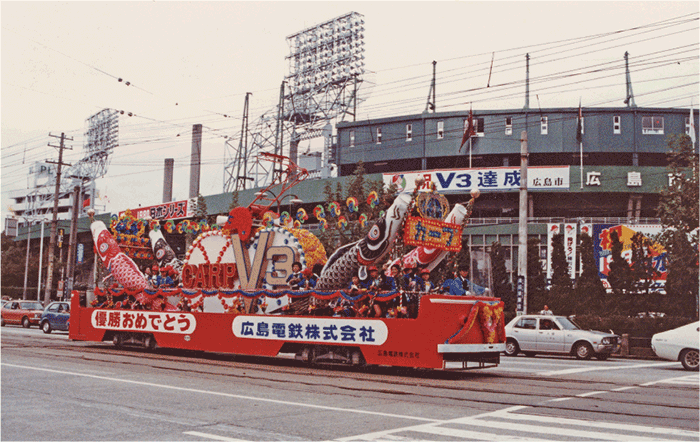
1980年(昭和55年) 広島電鉄提供
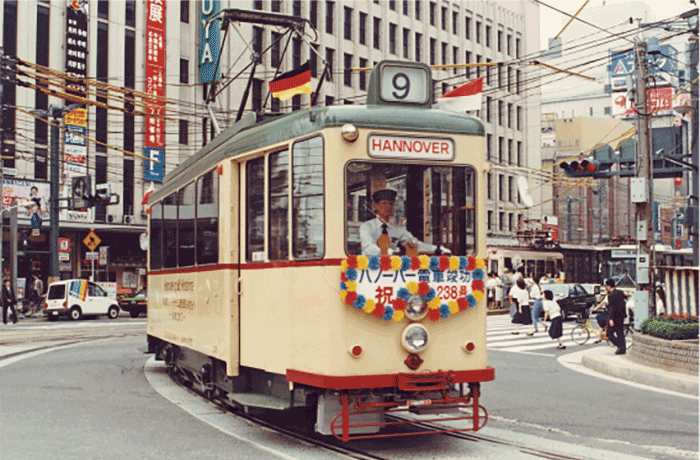
1989年(平成元年)広島電鉄提供
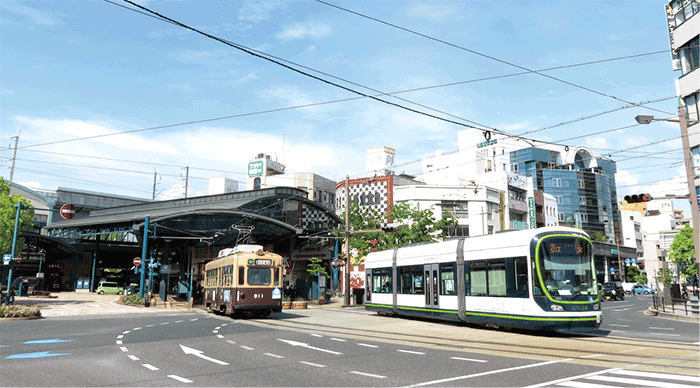
The place that serves people & the area, as a transportation hub, connecting the Sannin Area and the Sanyo Area
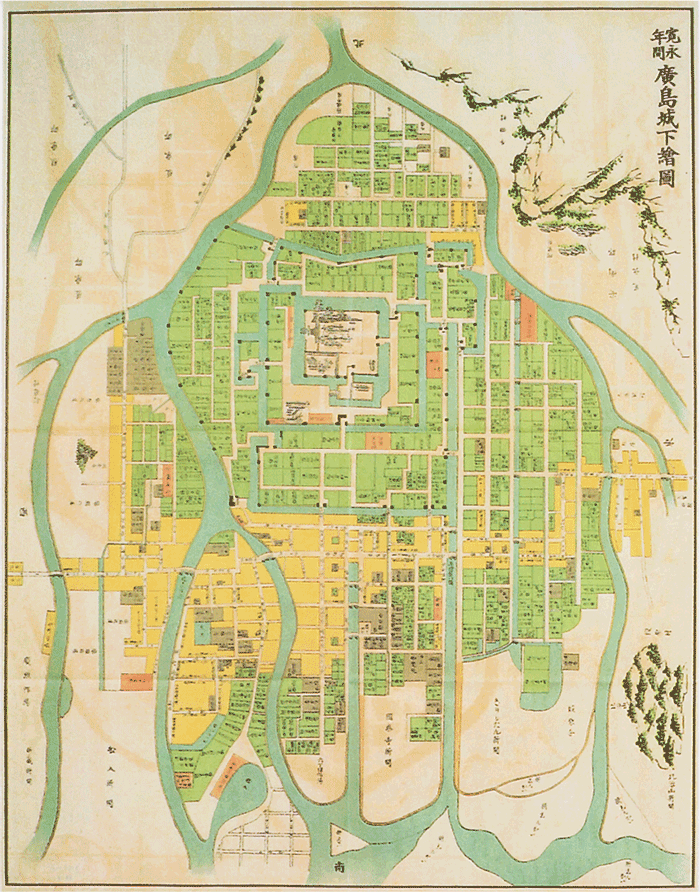
Beeing located at the "north gateway" of the castle town, "Yokogawa" has been a transportation hub,since the castle was built.
"Yokogawa" has been the starting and ending point of human flow and logistics. In addition, we have had a succee, in the changes of transportation methods.
The era of “walking between old towns”
Along with the construction of "The castle town, Hiroshima","Unshu Road", which crosses "The Chuugoku mountains" from "Izumo" to "Hiroshima", and "Iwami Road" from "Iwami" to "Hiroshima", had been improved.
From "Kabe" to "Yokogawa", the two roads were shared, and it was called "Unshu road". "Yokogawa" was something like the current service area, where we can rest, eat, get comfort, and shop, while looking out the castle town.
A signpost (stone monument) that reminds us of those days still remains at "The north entrance of Yokogawa JR Station".
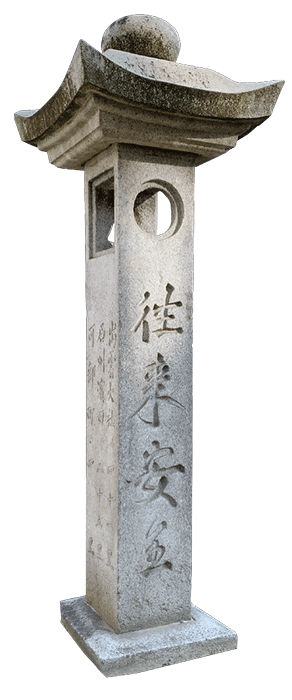
雲石街道石碑
The era of “the riverboats”
As a method of transporting agricultural and forestry special products and supplies to the castle town, boats' transportation using "Ohta River" became popular. Inside and outside of the castle town, there were many "Ganki - Stairs or structures which are similar to Stairs" that were the docks for boats.
Among them, the largest “Kusunoki Large Ganki - Stairs or structures which are similar to Stairs” in "The Ota River" was built in Yokogawa area, and it prospered, as a base for boats' transportation between "Kabe" and "Yokogawa".
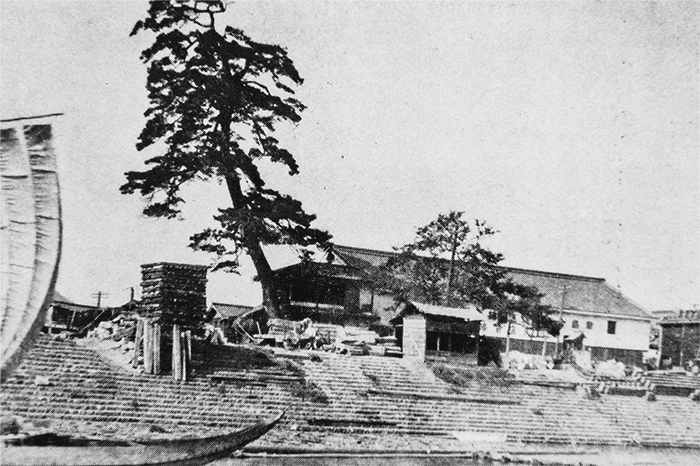
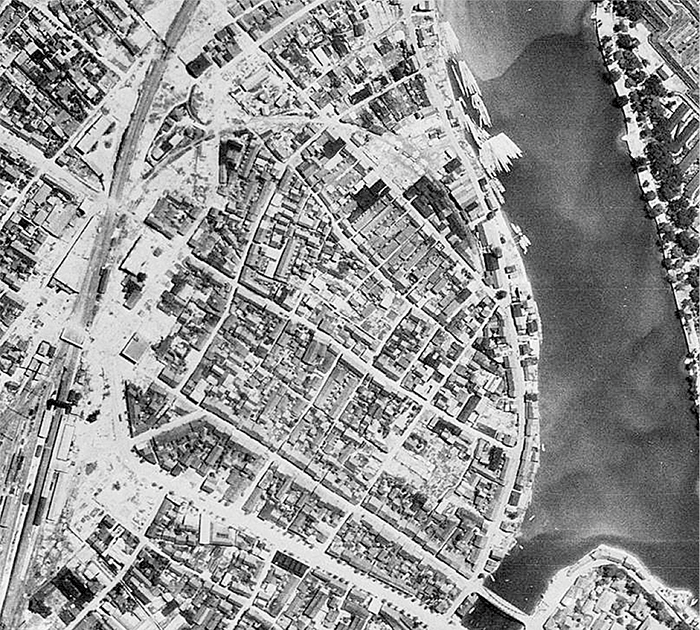
(昭和20年7月25日 米軍撮影航空写真より 国土地理院蔵)
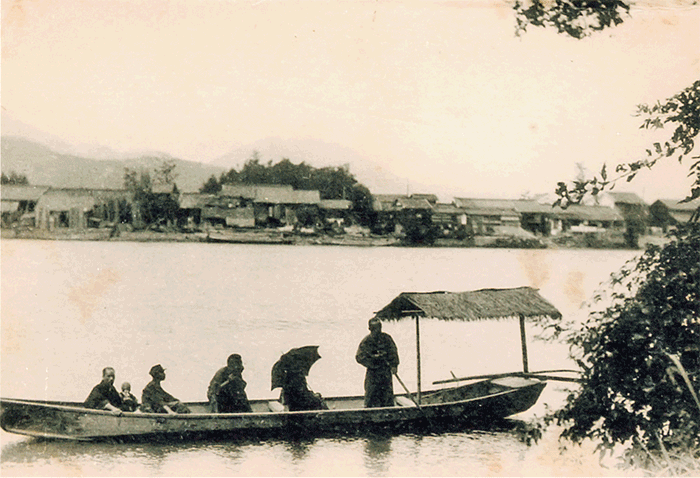
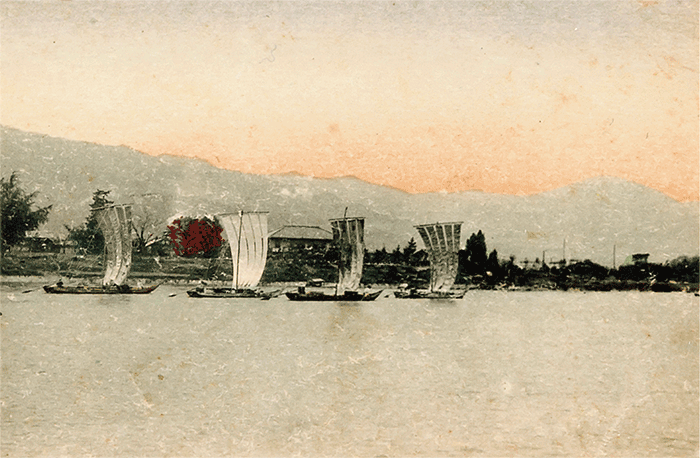
1919年(大正8年) 広島市公文書館提供
The era of “the Railroads”
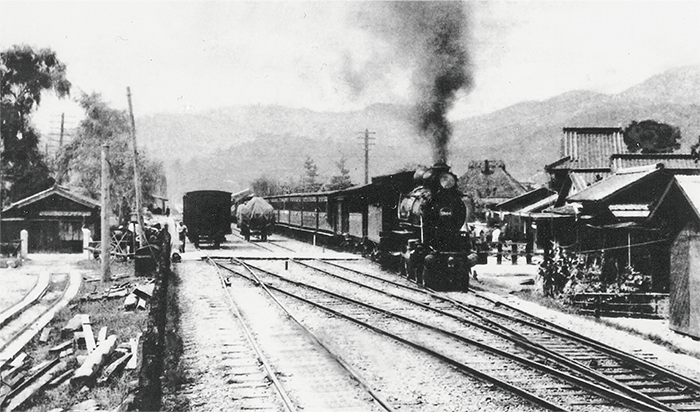
明治40年(1907年)頃の横川駅
In the Meiji era, the symbol of civilization, "Railroad," got open. "The Yokogawa Station" on "The Sanyo Railroad", which was the backbone of western Honshu, Japan, got open, in 1897.
"Kabe Light Railroad" started from "Yokogawa", (which was considered to be a rib - or a key), got open, in 1911.
For a while, after the opening of “Sanyo Railroad”, a freight-only, "drop-in line" connecting "Yokogawa Station" and "Kusunoki Large Ganki - Stairs or structures which are similar to Stairs" was active.
The protagonist of the cargo is the timber carried by the boats on “Ohta River”.
Those were shipped nationwide ro be railroad ties, and became famous as "Yokogawa Station’s railroads’ sleepers".
"Sanyo Main Line" and "Kabe Line", which were founded by the private companies, were taken over by "Kokuyuutetsudou - The Japanese National Railroad", and were now, operated by the private-company JR West.
Yokogawa has continued to hold the function of "the nodal point/the joint" between the spine and the ribs.
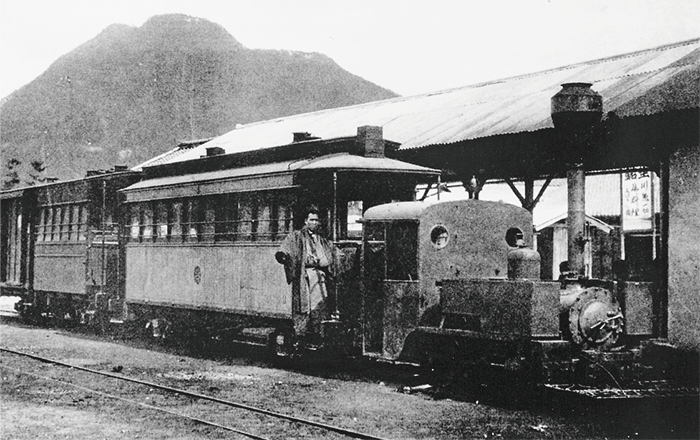
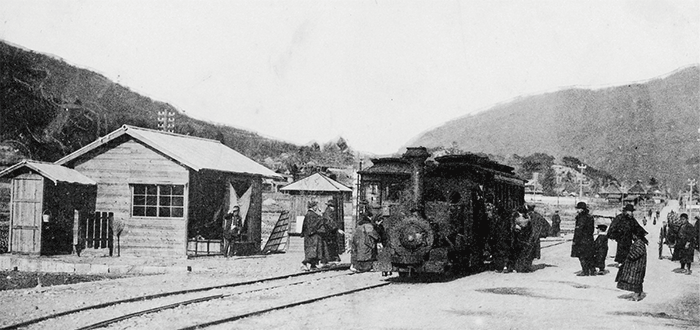
広島市公文書館提供
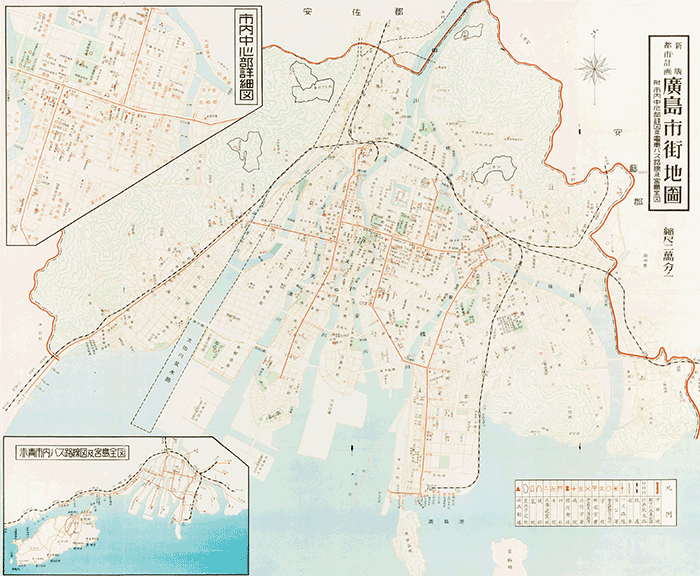
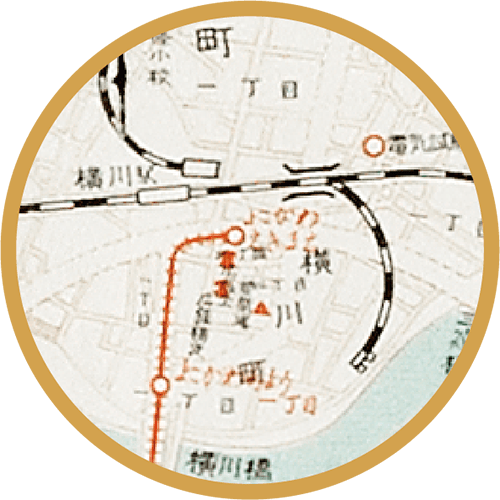
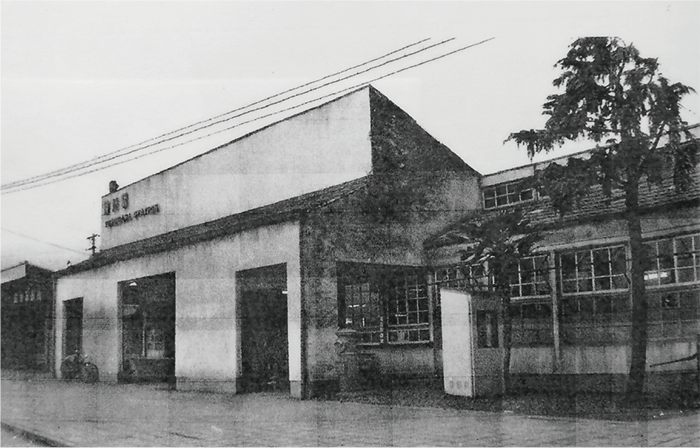
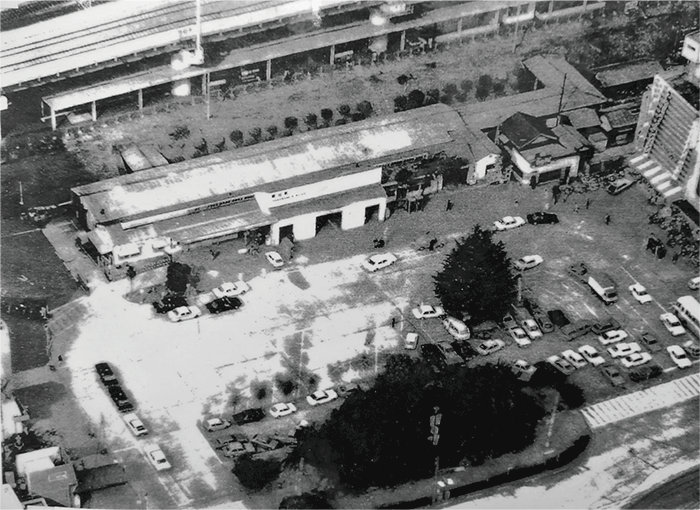
The era of “the public buses”
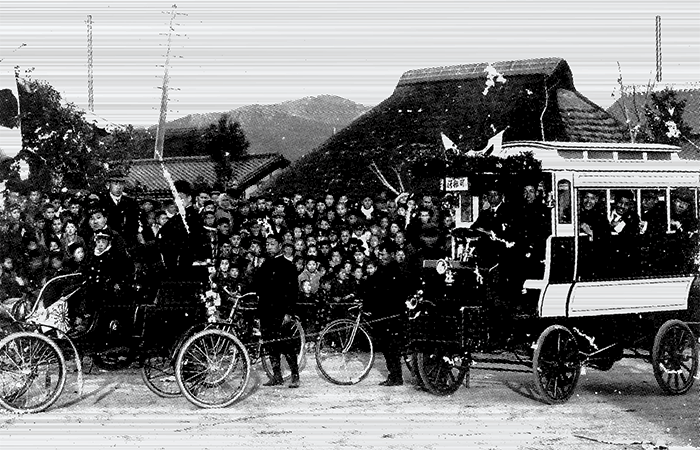
横川可部間乗合バス開業式 1905年(明治38年) 吉田恩古会提供
In 1905, Japan's first domestic shared bus was operated between Yokogawa and Kabe on "Unshu Kaido", on which, the traffic of humans and horses was heavy.
In 2004, volunteers in Yokogawa,restored the bus similar to it at the time of its founding. The nickname -"Kayoko Bus" was given by combining the acronyms of Kabe and Yokokawa. "Kayoko Bus" is active in local events, such as "Yokogawa Mysterious Market Event".
“Kayoko Bus” is usually stored in the special garage in “Yokogawa Station Square”.
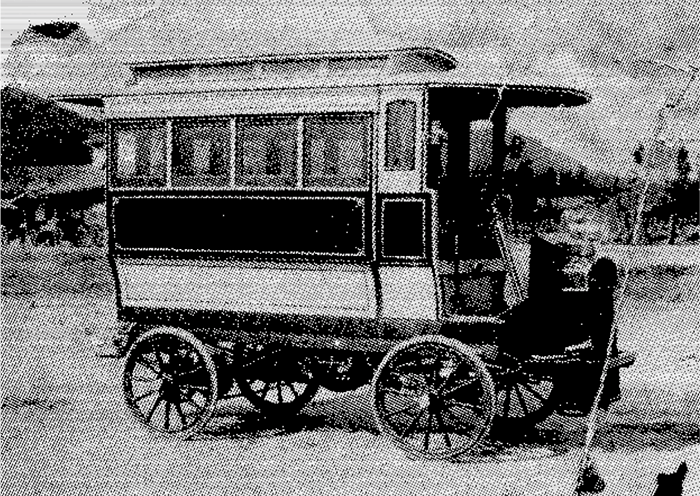
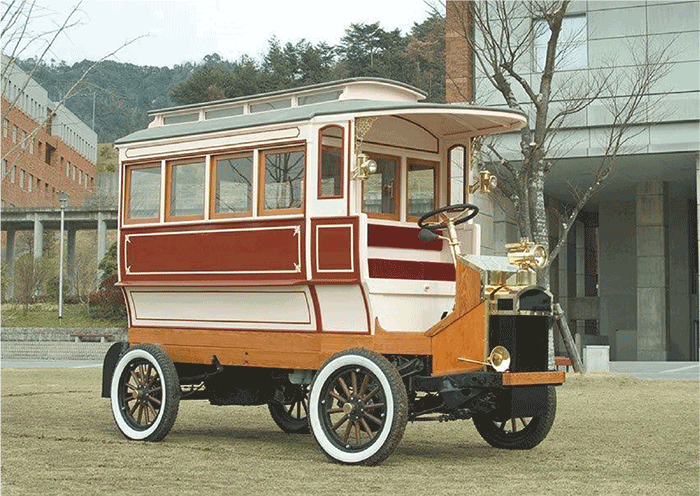
The era of “the streetcars”
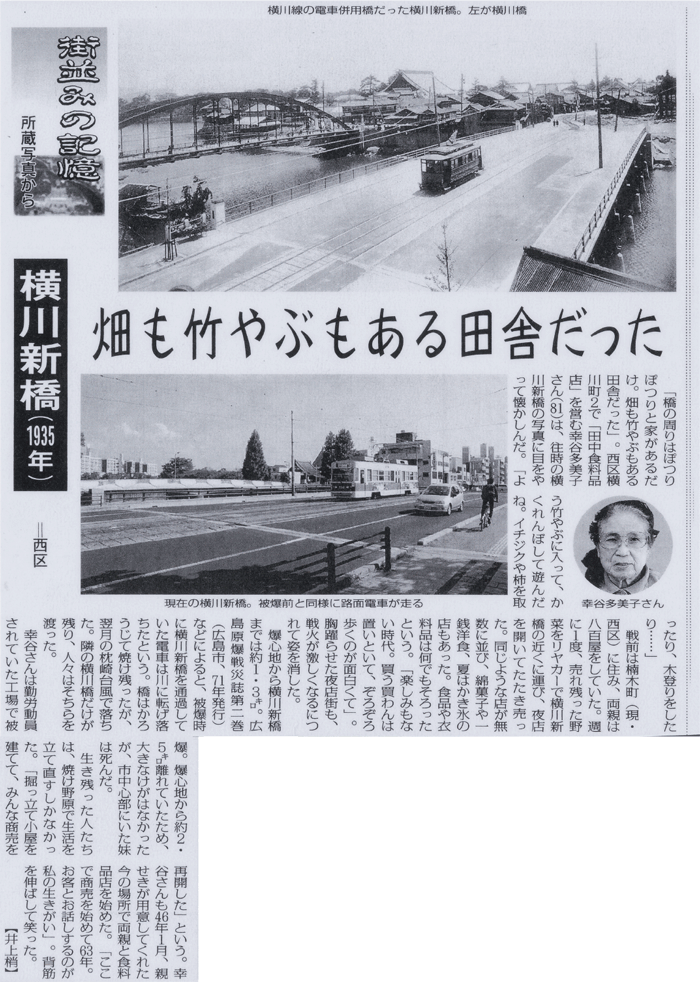
2009年9月26日付 毎日新聞より
Streetcars, (most of that, had been abolished nationwide), still continue to play a leading role, in urban transportation, in Hiroshima. "Yokogawa Line", which connected the city from north to south, got open, in 1917.
"Yokogawa Streetcars Stop", which used to be in the middle of the road, has been relocated in "Yokogawa JR station square".
Due to the renewal project of "JR Yokogawa Station Square in 2003", Streetcars increased conveniences, and as the result, that have been increasing the number of passengers.
"This renewal project has been attracting attention, as a national model of a "transportation improving project by connecting multiple transporters", in which the government and JR and Hiroshima DentetsuーStreetcar & Bus collaborate.
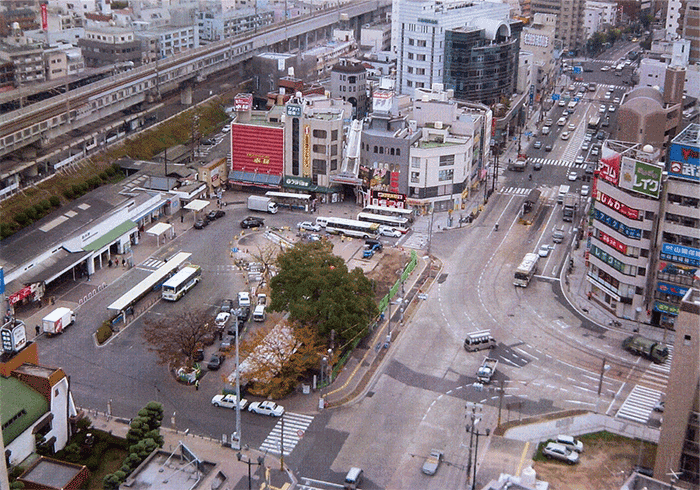
撮影年不明 広島国道事務所提供
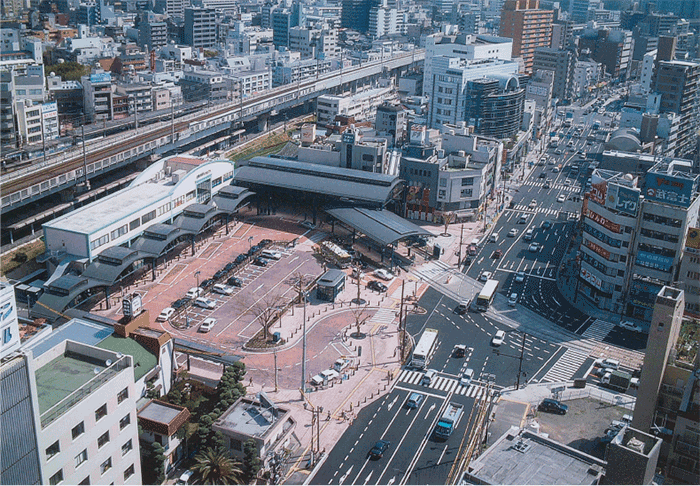
横川の歴史 日本語バージョン 横川の歴史 ~その個性の謎~
